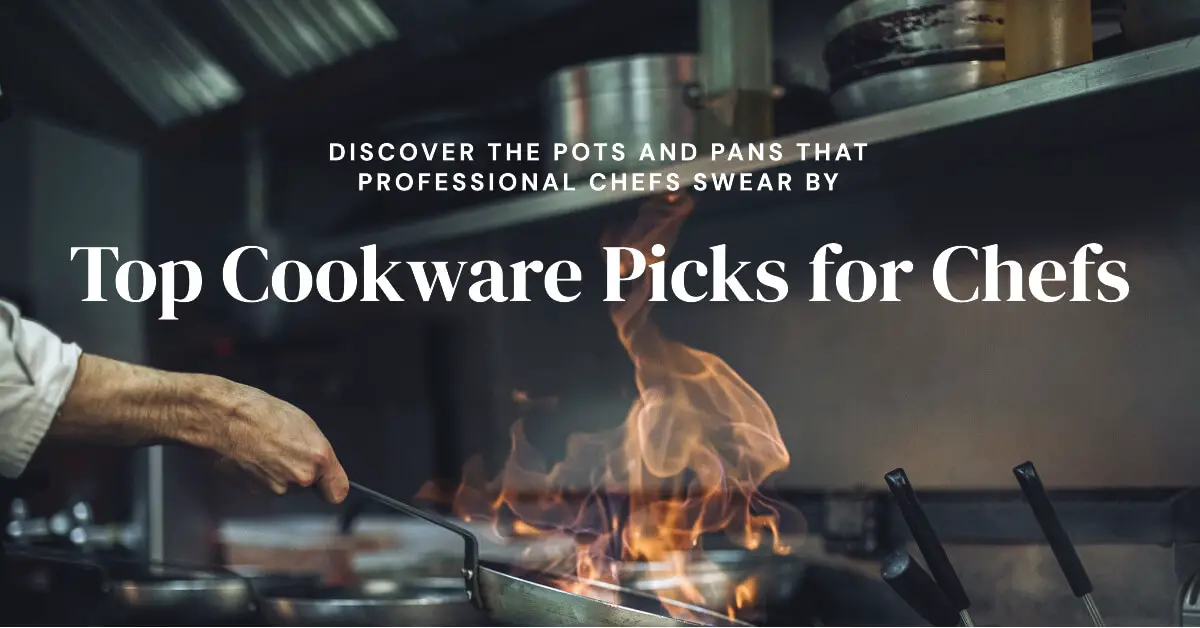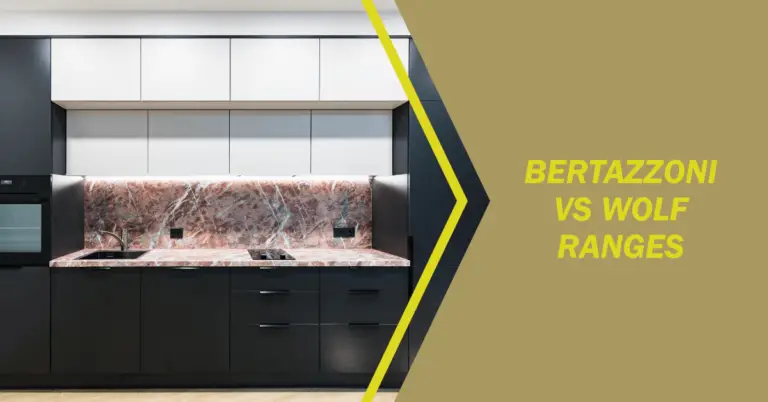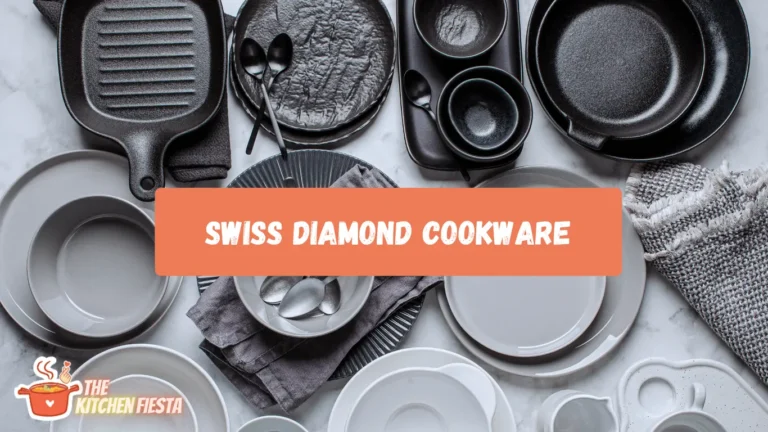What Cookware Do Chefs Use? (Professional’s Choice)

Eating at a fine dining restaurant is an experience. Beyond the impeccable service and creative menu, much of what makes restaurant cuisine so incredible happens behind the scenes in the kitchen. Talented chefs carefully prepare each dish, bringing together high quality ingredients with skilled cooking techniques. But often overlooked is the importance of a chef’s tools – the essential cookware that makes all the searing, simmering, and sauteing possible. So what types of pots, pans, and bakeware do professional chefs rely on? The short answer is that chefs use commercial grade stainless steel, heavy cast iron, heat responsive copper, and nonstick pans to create their culinary masterpieces.
Professional chefs have distinct cookware needs compared to home cooks. Restaurant kitchens churn out dish after dish, requiring pots and pans that can withstand high heat, rapid temperature changes, and constant use. Commercial cookware must be ruggedly durable and allow chefs to achieve optimum searing, frying, and simmering. For pros, performance is valued over looks or cost.
In this article, we’ll explore the metals, brands, and specific pieces of cookware relied on by chefs. You’ll understand why stainless steel is the kitchen workhorse, when cast iron is used for top searing results, why copper offers the ultimate responsiveness and control, and the role of nonstick in a pro kitchen. From All-Clad to Le Creuset, we’ll cover the top brands for performance and longevity. Additionally, you’ll learn the bakeware, sauté pans, sheet pans, and stock pots no commercial kitchen is complete without.
Whether you’re a passionate home cook ready to upgrade your pots and pans, or just curious about how the professionals equip their kitchens, this guide has you covered. Let’s dive in to reveal the cookware ingredients for cooking like a seasoned chef.
All-Purpose Stainless Steel – The Workhorse Metal of Professional Kitchens
Walk into any restaurant kitchen and you’ll inevitably see stacks of shiny stainless steel stock pots, sauce pans, sauté pans, and other pots and pan varieties.
Stainless steel is relied on by chefs for its durability, longevity, and reliable all-around performance. For professional cooks producing dish after dish, stainless steel’s hardy construction stands up to the demands of a busy commercial kitchen.
Stainless steel provides a number of performance benefits that make it a staple in pro kitchens:
- Durability – Stainless steel handles the rapid heating and cooling, frequent washing, and high heat of a commercial kitchen. It holds up to heavy use without warping or degrading over time.
- Low maintenance – Stainless steel has a low porosity, scratch resistant surface that does not react with foods. It’s dishwasher safe and requires no seasoning like cast iron. Low maintenance is essential when dishes must go out quickly.
- Even heating – Quality stainless steel cookware uses a tri-ply construction, with an aluminum or copper core sandwiched between stainless layers. This provides excellent even heat distribution.
- Versatility – The neutral stainless surface means acidic foods like tomatoes or wine sauces won’t react. Stainless can be used for simmering delicate sauces or high heat searing equally well.
- Professional appearance – Stainless steel looks clean and polished, fitting the aesthetic of a commercial kitchen.
With its unmatched durability and versatility, it’s no wonder stainless steel is the number one choice of pots and pans for professional chefs.
Top Chef-Recommended Stainless Steel Cookware Brands
With stainless being an essential cookware type for chefs, let’s look at some of the top brands used in professional kitchens:
- All-Clad – This American company is famous for its high quality, attractive tri-ply bonded construction. Their stainless lines with an aluminum or copper core are chef favorites.
- Cuisinart Multiclad Pro – A more budget friendly option, these pans still offer tri-ply durability safe for the oven and broiler. Great for home cooks.
- Viking – This pro-grade brand is known for polished, commercial-style stainless steel cookware made in the USA. Their tri-ply 3-ply is well loved.
- Mauviel – Founded in 1830, this French brand makes refined copper and stainless cookware handcrafted by artisans. An investment valued by chefs.
- Demeyere – This Belgian company produces professional-quality, 5-ply stainless steel cookware with superb even heating. On the pricier side but built to last decades.
The key for chefs is choosing tri-ply stainless steel pans with an aluminum or copper core. This provides far superior heat responsiveness and eliminates hot spots for consistent cooking results. While more affordable stainless cookware is widely available, it often lacks the tri-ply construction critical for optimal performance.
Searing and More: Cast Iron is Crucial for Commercial Kitchens
While stainless does it all, it can’t match cast iron when it comes to searing steaks, burgers, or venison to savory, crispy perfection. For achieving the highest heat possible for meats and other cooking applications, chefs turn to rugged, no-nonsense cast iron pans and Dutch ovens.
In commercial kitchens, well-seasoned cast iron is essential for:
- Searing – The heavy material holds heat extremely well, creating an even and blistering hot cooking surface perfect for getting a hard sear on meats to lock in juices. A smoking hot cast iron pan produces those grill-like sear marks.
- Baking – Once preheated, cast iron Dutch ovens provide steady, enveloping heat necessary for breads and other baked goods. The thick walls hold moisture as dough proofs.
- Frying – That same high heat also makes cast iron ideal for crispy fried chicken, seafood, fritters, and other fried fare.
- Pan sauces – After searing meat, chefs deglaze the fond from the pan with wine or broth to create rich, restaurant-quality pan sauces.
- Nonstick – Well-loved cast iron develops a natural nonstick seasoning, allowing chefs to fry eggs or fish that release effortlessly.
While requiring seasoning and maintenance, to chefs the searing performance outweighs any inconvenience. Professional kitchens minimize upkeep by dedicating certain pans just for searing or frying.
Chef Cast Iron Must-Haves
Any chef will have their seasoning rituals and beloved vintage pans, but here are some of the top cast iron brands found in pro kitchens:
- Lodge – This American brand famous for its affordable cast iron has expanded to offer enameled Dutch ovens and grill pans. A budget-friendly chef staple.
- Le Creuset – The French brand is renowned for its colorful, top quality enameled cast iron in a range of vivid hues. A signature piece.
- Staub – Another French company making gorgeous enameled and traditional cast iron in sleek matte black. Their lids contain moisture-creating spikes.
- Finex – Based in Oregon, Finex casts exceptional smooth-surfaced iron pans featuring stainless steel handles and a stylish profile. An artisanal choice.
- Wagner and Griswold – Many chefs seek out vintage cast iron cookware from these manufacturers prized for their machined smoothness and nostalgic charm.
Beyond basic skillets and Dutch ovens, restaurants may incorporate griddle tops, grill pans, woks, and custom pieces crafted just for their kitchens. Quality cast iron is on every chef’s essential cookware list.
Copper – The Heat Conducting Secret of Professional Kitchens
Copper likely congers images of shining pots hanging in restaurant kitchens, and for good reason – this metal is treasured by chefs for its unparalleled heat responsiveness and control. However, consumer-grade copper can require intensive maintenance. So how do pros leverage copper’s benefits while avoiding endless polishing?
The solution is saucepans and other pieces clad with a stainless steel interior lining. This provides the rapid precision of a copper exterior and the low maintenance ease of stainless inside, giving chefs the best of both metals.
Copper clad with stainless steel is coveted in commercial kitchens for:
- Precision – Copper heats and cools extremely quickly allowing chefs precise temperature control. Delicate sauces and dishes benefit.
- Evenness – The metal also spreads heat very evenly. There are no frustrating hot or cold spots.
- Control – Chefs can make quick adjustments, moving pans on and off heat for the perfect temperature to suit different ingredients.
- Response – The quick reaction allows chefs to rapidly boil, reduce, simmer, or change cooking methods as their dishes demand.
While expensive, the benefits of responsiveness and control ensure copper-clad pans have a place in well-equipped pro kitchens. Chefs treat them as lifetime investments.
Top Copper Cookware for Chefs
Brands that clad copper with stainless steel offer the ideal combo for commercial use:
- Mauviel – This French brand remains a gold standard for high quality copper and stainless cookware handcrafted in France. Their M’heritage line is exemplary.
- Bourgeat – Another French company supplying copper and stainless cookware with innovative features like removable handles. Over 160 years of history.
- Matfer Bourgeat – Owned by Bourgeat, their products offer a more affordable commercial copper option. Excellent heat control.
- De Buyer – Known for quality French copper and other lines, De Buyer’s affordable Lyonnaise collection clads copper and stainless beautifully.
- All-Clad Copper Core – The renowned company applies its tri-ply bonded technology using a copper core. Expensive but lifetime quality.
While key for delicate simmering and sauce making, most chefs can’t outfit their entire kitchen in copper. They select key pieces for priority uses while relying on stainless and iron for other needs.
The Role of Nonstick Pans in a Professional Kitchen
Walk into a restaurant kitchen and you likely won’t see nonstick pans dominating stove tops. Why? While essential for certain uses, nonstick alone can’t withstand the demands of a commercial kitchen. Chefs employ nonstick strategically for key tasks, complementing it with stainless steel and well-seasoned cast iron.
Here are the main uses nonstick fills in a pro kitchen:
- Eggs – The slick surface prevents stubborn sticking when cooking omelets, fried eggs, and other egg dishes, especially during a hectic breakfast rush.
- Seafood – Delicate fish and shellfish won’t cling, allowing a light pan sear while keeping the interior moist and flaky.
- Sauces – Nonstick allows creating emulsified sauces and gravies without them breaking from over-sticking.
- Minimal oil – Meats and veggies require little added fat for searing and sautéing, giving greater control over the final dish’s health profile.
However, chefs avoid nonstick for high heat searing or pan sauces since the coating can degrade. Still, quality nonstick pans provide value in pro kitchens when used strategically.
The Best Nonstick Pans According to Chefs
Rather than cheaply coated drugstore pans, chefs opt for commercial-grade nonstick made by trusted brands:
- Anolon Advanced – Made of hard-anodized aluminum, this line has excellent heat distribution. The nonstick coating is durable and metal utensil safe.
- All-Clad HA1 – The renowned company brings its reputation for quality to these hard-anodized pans with scratch-resistant, 3-layer nonstick coatings.
- Circulon – This brand offers reasonably priced, high performance nonstick pans with raised circles to minimize surface contact and maximize durability.
- Scanpan – Used in Europe’s Michelin star kitchens, Scanpan uses a PFOA-free ceramic titanium surface claimed to be ten times harder than traditional nonstick.
- Swiss Diamond – These innovative pans have a reinforced nonstick diamond coating designed for rapid heat transfer and easy cleaning. A pricier but wise investment.
While it has its place, nonstick alone can’t fulfill all a chef’s demands. It complements other essential cookware as part of a complete set.
Must-Have Bakeware and Other Essentials
Beyond burners and the stove top, a full commercial kitchen requires key pots, pans, and bakeware for the oven and other cooking prep. Here are some final essential pieces found in every pro kitchen:
- Sheet pans – Heavy duty aluminum half sheet pans are constantly used for roasting vegetables, cooking proteins, and other high-volume oven uses.
- Stock pots – Large 20+ quart stainless pots make stocks, boil pasta, stew, and hold finished soups at perfect temps.
- SautĂ© pans – Essential for sautĂ©ing veggies, searing, stir frying, and more stove top work. Various sizes used constantly.
- Dutch ovens – Heavy enameled cast iron pots used for braising, stewing, boiling. Also aid bread baking.
- Sauce pans – Smaller pots for reducing sauces, simmering, and other delicate uses. Having a full range of sizes is key.
- Carbon steel pans – Similar to cast iron, carbon steel also takes high heat for searing while being lighter weight.
These supporting pieces round out a pro kitchen’s full cookware assortment.
The Professional Chef’s Cookware Lineup
To recap, outfitting a restaurant kitchen requires a combination of durable stainless steel, heat retentive cast iron, responsive copper, nonstick pans, and essential bakeware and pots. Performance, durability, and the right tool for each cooking job define the pro chef’s cookware lineup.
While expensive, quality pots and pans are lifetime investments for serious cooks. Piecing together a set over time can make professional-level cookware more affordable for passionate home cooks. Start with a tri-ply stainless fry pan, vegan a quality cast iron skillet, and build from there.
Understanding how real chefs equip their kitchens lets you make informed choices when upgrading your own cookware. You don’t need every piece, but select metals and materials that align with your cooking style and favorite dishes. With the right pans, you can execute recipes with professional expertise and consistent results. The end result is restaurant-caliber meals enjoyed in the comfort of your home.
So next time you dine at an incredible restaurant, look beyond the food on the plate. Think about the behind-the-scenes pots, pans, and culinary tools that enabled the chefs to craft each incredible bite. While talent is key, quality cookware sets the stage for chef-level creations. With the recommendations in this guide, you can cook with professional-grade pots and pans in your own kitchen.



